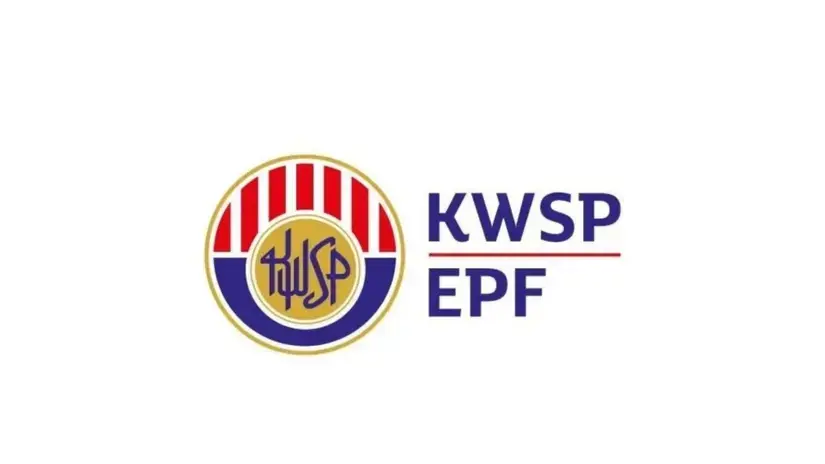What Is EPF: A Guide To Employee’s Provident Fund
If you are looking to invest as an expat or high-net-worth individual, which is what I specialize in, you can email me (advice@adamfayed.com) or WhatsApp (+44-7393-450-837).
Table of Contents
Introduction
You might have come across the term EPF and have asked “What is EPF” if you are an expat living in Malaysia.
If you work as an employee, you probably have a general understanding of how Malaysia’s Kumpulan Wang Simpanan Pekerja (KWSP), also known as the Employees’ Provident Fund (EPF), operates.
According to the EPF Act of 1991, EPF serves as a mandatory pension plan for workers who don’t have access to pensions and is essentially a form of social security for Malaysian employees (such as those in the private sector).
Employers, you are responsible for managing the entire EPF contribution process for your employees. This emphasizes the value of knowing how to calculate contributions for your employees and makes you accountable for any possible mistakes or discrepancies.
However, it’s critical that both employees and employers fully comprehend how EPF contributions are determined.
Read this “What is EPF” guide to help you understand EPF contributions in Malaysia.
What is EPF?
The Employees’ Provident Fund (EPF), also referred to as Kumpulan Wang Simpanan Pekerja (KWSP), is a social security organization in Malaysia. Employees Provident Fund, established in 1951 in accordance with the Employees Provident Fund Ordinance, underwent a number of revisions before becoming the EPF Act 1991 (Act 452) as it is known today. As of December 2019, the EPF had 522,967 employers and 7.63 million active members.
The EPF is intended to assist private-sector employees in saving and conserving a portion of their earnings in a scheme, much like many other mandatory pension plans in nations around the world.
The accumulated savings can then be put to use as a retirement account or as assistance for employees in the event that they are determined to be unfit for employment. EPF membership is required for Malaysian citizens working in the private sector and is optional for expats.
Members may also decide to keep their EPF account under:
- Simpanan Konvensional, in which their savings are handled and invested according to standard procedures; or
- Transfer their savings to Simpanan Shariah, where they will be invested and managed in accordance with syariah principles.

Who must make EPF contributions?
Although non-Malaysians have the option to opt out, EPF contributions are required of Malaysian employees working in the private sector and those with non-pensionable positions in the public sector.
Employers must make sure that the proper amount of contributions are withheld from employees’ paychecks and sent to the EPF. Employees are anyone you have hired to work for you as part of a contract, service, or even an apprenticeship.
There are some exceptions to this rule, including domestic workers, anyone incarcerated, and, as was already mentioned, those who are not Malaysian citizens or Permanent Residents.
The First Schedule (Section 2) of the EPF Act 1991 contains a comprehensive list of EPF contribution exemptions.
What are the Benefits of EPF?
You may be thinking, “Wow, that sounds great and all.” But what other advantages can you actually obtain from making an EPF contribution, aside from having a lump sum to rely on when you retire?
You are entitled to the following benefits:
- Account 1 Savings Top-Up: Contribute voluntarily to your spouse’s or family’s EPF account.
- Hajj Registration: Your initial Hajj registration can be switched from the Lembaga Tabung Haji (LTH) to the EPF’s current Hajj Registration facility without affecting the previously mentioned Hajj rotation date.
- Annual Dividends: The EPF contributions that you and your employers made may be subject to investments; these investments will at least yield 2.5% dividends annually, which will be credited to your savings and enable contributions that are higher than the initial amount.
- Incapacitation: In the event you are unable to work, use your savings.
- Death: The member’s dependent or next-of-kin receives RM2,500.
- Tax Exemption: Tax deductions for EPF contributions are allowed up to RM4,000.
Which types of payments are subject to EPF contribution?
It’s important to note the various components that are liable for EPF and the components that do not contribute to EPF before we delve further into the details of EPF and how to calculate your staff’s or your own contribution.
You must factor in the following in your EPF deduction calculations in accordance with the Act:
- Salaries (monthly, weekly, daily, or otherwise)
- Bonuses
- Commissions
- Allowances
- Payments for unutilised Annual Leave
- And any other types of payment an employee is entitled to under their contract.
However, there are a few exemptions listed here that are not regarded as subject to deductions for EPF, including:
- Service charges
- Overtime payments
- Gratuity payments
- Retirement benefits
- Retrenchment, lay-off or termination benefits
- Any travelling allowances or the value of any travelling concessions
Let’s move on to the calculation of EPF contributions now that you are familiar with the fundamentals.
How to Calculate EPF Contributions?
It’s important to remember that employers must pay their employees’ contributions by the 15th of the following salary month or earlier before we begin the calculations.
As a result, employers will initially have to make contributions on behalf of the employees’ shares; however, this will be reimbursed when the employee receives their salary.
You must consider a number of variables when figuring out contributions for your staff, including the monthly salary rate and the employees’ ages. As was already stated, it’s crucial to look into the employee’s citizenship and place of permanent residence.
Instead of using the exact percentage, which only applies to employees whose monthly compensation exceeds RM20,000, contributions should be calculated using the Monthly Contribution Rate under the Third Schedule of the EPF Act 1991.
Keep in mind that all EPF contributions must be rounded up to the next Ringgit, not to the nearest cent.
Let’s look at an example to help us understand this:
The total monthly compensation for Employee A (including the above-mentioned liable payments) is RM6,250.
According to the Third Schedule’s Contribution Rate, the employee’s contribution should be RM567 (9%), while the employer’s contribution should be RM756 (12%). With this, the monthly EPF contribution now stands at RM 1,323.

The Rates of EPF Contribution
In light of the 2020 Economic Stimulus Package, which was announced to aid businesses impacted by COVID-19, the Malaysian government revised the contribution rates on February 27, 2020.
The statutory contribution rate for employees was reduced from 11% to 7%, went into effect for wages in April 2020 (for the contribution in May 2020), and will last through December 2020 (for the contribution in January 2021).
By submitting Borang KWSP 17A, KWSP members can still decide to maintain the initial contribution rate of 11%. (Khas 2020). Employers must submit the form to the EPF, and it must take effect the following month.
You can use this link as an employer to determine the precise EPF contributions that must be made by both you and your employee in order to calculate your employee’s salary.
How to Find the Salary Range for Your Employee for EPF Contribution Calculation
Find your employee’s wage range by referring to Part A if they are a Malaysian citizen, a Malaysian Permanent Resident, or a noncitizen who chose to contribute prior to 1 August 1998.
In the same way, refer to Part B and find the employee’s wage range to determine the precise amount if your employee is not a Malaysian citizen and has chosen to contribute on/after 1 August 1998 or under paragraph 6 of the First Schedule on/after August 2001.
Depending on their immigration status and their choice of contribution period prior to certain set dates, employees over 60 can refer to either Part C or Part D.
Can employees make an EPF contribution of less than 11%?
A lower minimum statutory contribution rate for employees—from 11% to 7%—was announced by the government in the early months of 2020. Employees had the option to decline the reduced contribution program, but it was only applicable to EPF members until the end of 2020.
An announcement similar to this was made after Budget 2021, though the reduced minimum statutory contribution for the year 2021 was set at a marginally higher 9%.
The option to return to 11% is once more available to EPF members, but doing so requires submitting an application via the employer in question using a Borang KWSP 17A (Khas 2021) form.
Pained by financial indecision? Want to invest with Adam?

Adam is an internationally recognised author on financial matters, with over 760.2 million answer views on Quora.com, a widely sold book on Amazon, and a contributor on Forbes.



